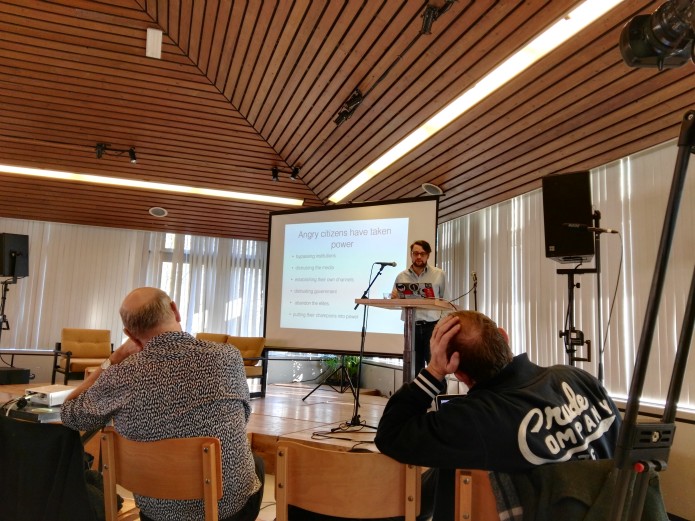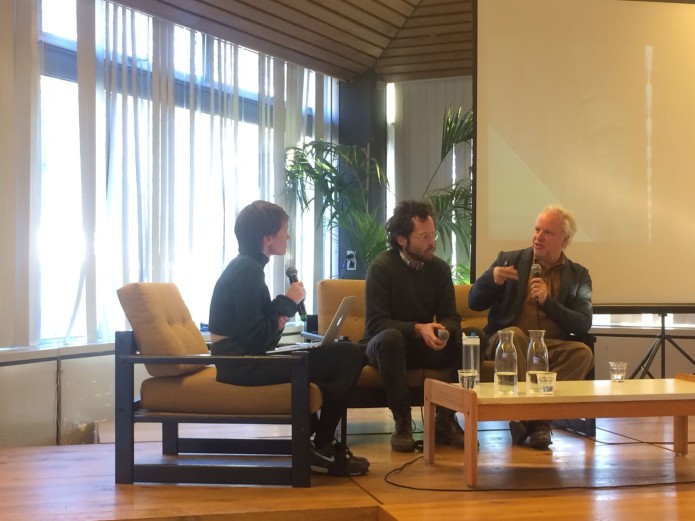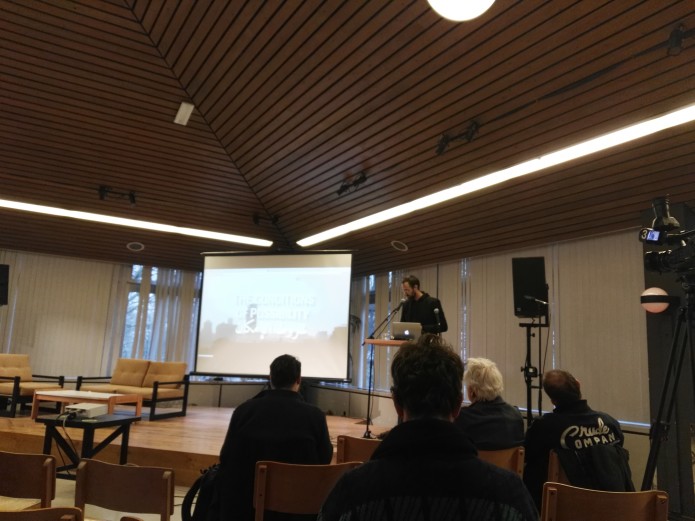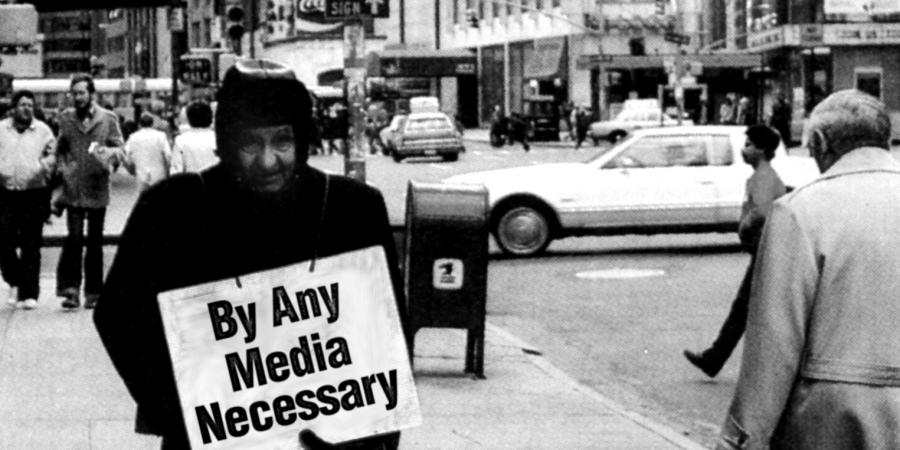 Image: Critical Art Ensemble, http://theinfluencers.org/en/critical-art-ensemble
Image: Critical Art Ensemble, http://theinfluencers.org/en/critical-art-ensemble Verslag: Conferentie 'The Society of Post-Control'
Tying into the opening of the exhibition As If: The Media Artist as Trickster, on the 20th of January 2017, Eric Kluitenberg organised – together with curator David Garcia and Framer Framed – a number of public events. The events were also part of a bigger research trajectory called Tactical Media Connections, exploring the legacies of Tactical Media and its links with the present, which was started by the organizers in 2014.
The first event, which was a public debate called Vox Populi and the Syrian Archive: documenting revolution and conflict in the digital age, took place in the Eye Film Museum on the 21st of January. The second one, which happened on the 22nd of January, was a one-day discussion event called The Society of Post-Control.
This second discussion – or conference, if you will – opened with a thoughtful introduction by Eric Kluitenberg, who moderated the event. After mapping out and briefly mentioning the aims and interests of the Tactical Media Connections trajectory, Eric swiftly called on Michael Seemann’s work – whose essay Digital Tailspin: Ten Rules for the Internet After Snowden (“Kontrollverlust”) greatly inspired the organization of the gathering. The conference aptly started, then, by wanting to question the effectiveness of more usual and exemplary interpretations of ‘control societies’ (in the lines of the image and structure of Bentham’s panopticon, for instance): it is, perhaps, time to consider the concept and dynamics of ‘control’ in other ways that respond to the urgency of the 21st century.
Eric Kluitenberg set off the conference by explaining Seemann’s concept of Kontrollverlust. In Michael Seemann’s words, “current debates about copyright, privacy, failed corporate communications, state secrets, whistleblowing, or spontaneous network phenomena like flash mobs and hashtag revolutions, are all manifestations of one and the same issue: the loss of control over data on the internet”[1]. Additionally, as Eric Kluitenberg added, this loss of control (Kontrollverlust) does not only affect our data; as it seems to be triggered and systematized by technological and socio-political systems which are so overwhelmingly complex that it has become hard to conceptualize the agents operating them (if there are any). Some examples are the ever-increasing complexity of financial systems (over which there seems to be little control) and the overpowering loss of control over demographics and migratory movements. One wonders, then, how appropriate Bentham’s classic panopticon structure is, in the face of this pressing – and very real – loss of control over our data, systems, and societies.
After this introduction, Seemann gave a concise and in-depth presentation on his Kontrollverlust concept (Digital Tailspin), which served to take off the conference. As mentioned previously, and explained in his own words, Kontrollverlust speaks for the constant loss of control of our data. The background of this concept comes from illustrating our contemporary world as a world that is now public by default: whilst not long ago privacy was our default state (in an analogue world where everything was kept in boxes and behind closed walls), the tables have turned, and it is now hard to keep anything private. Adding to this, Seemann explained how we are currently unaware of the amount of data that is being created (for instance, we do not know how many times we are being recorded), as well as being unaware of how this information is copied and reproduced, or what the data means. In conclusion, Kontrollverlust is what happens when “data we never knew existed will found channels that are not intended and reveal information that we would never have thought of our own” (quoting Seemann’s presentation).
Seemann then analysed the internet as the space where what he names The Second Order Kontrollverlust has emerged. According to him, all the tools that we thought the internet gave us in terms of empowerment and self-organization are now being used, and the utopia of the internet as a free space has now become true. However, this has happened in a horribly wrong manner – as these tools have now been hijacked by right wing anger (think: alt-right forums, neo-fascist media outlets, etc.). The Second Order Kontrollverlust, then, points towards this loss of control that not only affects individuals – but is also societal.
Ending on a speculative note, Seemann interpreted the future of the Post-Kontrollverlust Order. To do so, he called on Deleuze’s Society of Control and Alexander Galloway’s Protocol; and agreeed with them on the emergence of a new control order. To these interpretations, however, Seemann added the total collapse of the disciplinary society in our contemporary world (think Trump: every attempt to discipline him has failed miserably), and the replacement of decentralised paradigms by the centralised structure of big, multinational platforms such as Google, Apple, and Facebook.
After finishing his presentation by proposing that the society of control could be a solution to this new post-control order, Seemann was joined on stage by Geert Lovink, the founding director of the Institute of Network Cultures. Here, Seemann briefly answered some questions related to the hacker community’s response to the current state of affairs and the role of cyber-security. The speakers then discussed the possibilities of re-analysing the society of control as a response to post-control; touching on the failure of disciplinary measures and the subject’s call to act (let’s not forget that the previous day, 21st of January 2017, tens of thousands of people took part in Womens’ marches all over the world). The discussion continued by calling on the failure of institutions, and the rise of platforms – such as the ones mentioned previously – as a new order based on algorithms, matching, and the sheer workings of data.
At this point of the discussion, activist Hadi Al Khatib – who is part of the Syrian Archive project – joined the floor to give a reflection on the notion of post-control, and what had been mentioned about it until then. Answering from a perspective of what is currently happening in Syria, Hadi Al Khatib relevantly explained how the Snowden files leak – which can be interpreted as a symptom of Seemann’s Kontrollverlust – was helpful in explaining to journalists and human right activists in Syria how data and intelligent agencies work. He then recalled how eight different big US companies sold, during the uprisings in Syria, technology that allowed for the interception of mobile phone communication, geolocation, packet inspection devices, and the similar; to facilitate the monitoring of people. In thinking of how the civil society could respond to that, Hadi Al Khatib brought in the factor of risk: the fact that technology and data is public by default puts Syrian citizens, activists, and journalists in direct, physical risk; since it makes it easier to target them. In these situations, however, risk is perceived in an irrational manner, as it involves the fear of an airstrike or bomb; and these same people do not consider digital risk – even though it affects their physical risk in a very direct way.
After this very timely reflection the floor opened for questions or comments from the public. Amid these, a comment predicted the debate that would come up again towards the middle of the conference: it is perhaps best to not give up too quickly on the society of control, since institutions are not only collapsing – but they are now stronger than ever. The example mentioned here was the story of “Stuxnet”, the computer worm that greatly damaged Iran’s nuclear programme; and which is thought to have been created jointly by the governments of America and Israel. Seemann swiftly responded to this by stating that the creators themselves loss control of the virus at some point – thus confirming that this situation too was a case of Kontrollverlust.
Once this first discussion panel was over, Eric introduced David Garcia and Marc Tuter’s talks. David Garcia, who is one of the curators of the As If: The Media Artist as Trickster exhibition (together with Annet Dekker), started his talk by framing the Framer Framed exhibition with a quote by writer J G Ballard focusing on the invention of reality: instead of trying to change reality, it is as if reality was not there yet – and the task of many of the artists present in the exhibition had been to invent it. Within this context, David Garcia followed by explaining the links between Tactical Media and the current meme wars: although many – including himself – thought the tactics of Tactical Media had died, they are now being used to strengthen and exalt right wing movements such as the alt-right. With his talk, the curator called for a bigger and better understanding of what is going on in the internet, in the forums and message boards of neo-fascists. Calling on Florian Cramer’s talk on the internet presence and influence of the alt-right, David Garcia wondered – where are the left-wing equivalents of the_Donald and Pepe the Frog (two very popular right-wing memes)? Whilst doing so, he summed up the findings or conclusions that had been reached in the Meme Lab workshop he had organised two days before; questioning if the left had not been angry enough – and if anger had been seized more successfully by the alt-right.
After answering a pressing question from one of the audience members, the stage was taken by media researcher Marc Tuters; who gave a presentation on the relationship between Trump’s election, the mistrust of mainstream media in the US, and right-wing online activism. In his talk, Tuters addressed the phenomenon of the alt-right – an extreme right wing movement born through several internet forums –, as well as its relationship to Trump (whose Chief Strategist is an alt-right proponent) and internet memes such as Pepe the frog, the_Donald and God Emperor Trump. Through the empirical analysis of data (such as the use of alt-right slurs on the internet, the distribution of meme images, the words used in Trump’s speeches, and the “likes” given by people who follow this phenomena) the speaker mapped the evolution of these movements and its advocates, together with its link to the increase of mistrust in the media. This mapping served to give the audience a clear and concise picture of how these movements are using – and perhaps even taking over – the internet.
To follow a similar structure to the first part of the conference, the moderator now asked designer Kim de Groot to join the stage and give a response to the talks by Marc Tuters and David Garcia. She brought up the very urgent point of the upcoming Dutch elections (which will take place in March 2017), and mentioned how these internet phenomena translate in people – not only artists – making reality, and re-writing visual history. At this point, Kim de Groot wondered: how to plug into this infrastructure in the view of the Dutch elections, and use this energy to create change? Here, the three speakers (de Groot, Tuters, and Garcia) discussed how the far right manages to harness this anger in a better way, whilst also calling for an exploration and analysis of left-wing internet presence to counter the morbid fascination Trump inspires.
Once the discussion ended the floor opened for questions from the public, who eagerly discussed the topics of the panel and sought to find a practical, left-wing response. After a long debate, Eric Kluitenberg called for a coffee break; making a few closing remarks on the topics of the presentations and their links to the overall conference: the fact that we know that Trump’s administration is going to pass regressive measures, but we do not know when or how, is the essence of the post-control concept. To put it bluntly, we know what is going to happen, but have no control on when it is going to come, or where it is going to lead us to.
After the break, artist Ingrid Eel performed “On Legibility”, a pondering performance lecture on biometric legibility. In this performance, she explained and explored how biometrics target certain bodies; bodies that are not identified by technology in the same way that others are, and bodies that need to find a way to fool biometrics in order to survive. The consequences of this are brutal. Whilst she slowly deformed her mask, Eel evoked several cases; including the 18-year-old asylum seeker who burned his fingertips to be able to travel to Sweden to start a new life (thus attempting to trick the biometrical system that gathered his data and held him in Italy, where he had no opportunities); or the Nikon digital camera with a blink-warning function that did not recognize certain Asian users’ smiles because it thought they were blinking, thus discarding their photos. In her own words: “bodies that fail to align with state-recognised definitions of identity are deemed illegible, and are subjected to various forms of violence”. Her performance poignantly ended by proposing a masked form of resistance: “what does it mean to render yourself willingly unrecognizable?”
After the performance the moderator introduced the following presentation of the conference; given by artist and theorist Ian Alan Paul (co-curator of the As If exhibition). This presentation developed from thinking about the forms of power described by Foucault (the Disciplinary Society) and Deleuze (the Society of Control). Here, Ian Alan Paul explained how he believes that some of these forms of power are not disappearing – in fact, they are stronger than ever –; and aligned himself with the society of post-control, thinking of it as a space for the radical left – a place where might want to head to. Appropriately, the speaker started his presentation describing three factors we should be careful with at this given point in time: we should try to resist the novelty of the present, as well as attempting to resist universalizing the situation (by maintaining a more global perspective); and we should strive to organize ourselves in ways that do not reproduce what we are trying to oppose. In his own words, we should hold on to an idea of resistance that doesn’t map on holding onto a reactionary idea of the state and system.
Going back to Foucault and Deleuze’s interpretations of control, Ian Alan Paul used Deleuze’s definition of the society of control and bio-power to eventually speculate on post-control as a space of disruption and resistance. To do so, the speaker explained how, for Deleuze, power is not about determining everything – but about the management of possibility. The metaphor for the concept of power, here, is the freeway: a space where movement is allowed, but nonetheless regulated. By calling on Deleuze’s description of power management – which can be explained with another useful metaphor: a good town manager is concerned with the future of the town he or she is managing, not the planning of the town itself –, Ian Alan Paul mapped out several possible forms of resistance to this form of power, including sabotage, encryption, escape and evasion. These allowed him to move forwards, thinking of the society of post-control as a form of resistance to the present moment. If we think of post-control as the exception (that which is not foreseen), we can navigate a political response to that which we do not know; in his own words, develop “an infrastructure for the improbable”. Ian Alan Paul further broke down this infrastructure into three forms of resistance: opportunistic (developing a shared perception and consensus with other people), speculative (using turbulence and disruption as a political category, from which something else can be born), and experimental (pursuing and magnifying post-control by creating conditions of experimentation, to push the boundaries of control).
After ending his presentation by evoking, what he named, the ultimate political dream – the desire to become ungovernable –, Eric Kluitenberg introduced researcher and activist Bernardo Gutiérrez. Gutiérrez’s perspective on the topic of the conference came from a different point of view, as his presentation evolved around the different Square movements that have happened throughout the world in the past years (such as, for example, the Gezi Park protests in Turkey and the Indignados movement in Spain). As a researcher, Gutiérrez explored how digital networks influence these protests, and how these digital topologies and analyses repeat themselves through different protest movements. As a matter of fact, he explained how a data-mining analysis of some of these protests allowed him to come across a type of global movement: protests throughout hundreds of cities could be traced to one concrete type of anger that was executed in a very particular way.
It is true that some of these movements happened several years ago (2011 – 2013, roughly speaking); and although it seems that we are now in a more pessimistic situation, Gutiérrez rightfully points out how the anger is still present (as we could see in the Womens’ marches of January 2017, or the #NiUnaMenos protests of 2016). After explaining the evolution of the public protests in Brazil in 2015-2016, the speaker presented an inspiring example of what the protests in Spain created (after the Indignados movement of 2011), where citizen-front confluences and grass-root groups became elected for several city-halls. Gutiérrez ended the presentation by calling for a cautious approach to post-control: losing control is good, but to do so we need to think about the frame, carefulness, and tone that will be used.
After the presentation, Eric Kluitenberg invited artist Steve Kurtz onto the stage (together with Ian Alan Paul and Bernardo Gutiérrez) to reflect on the two previous presentations and overall conference. At this point, Kurtz calls on a third model of resistance (adding to the ones described by the previous two speakers) structured by activist and art critic Brian Holmes, which is divided into four parts: to develop a space of collective affect and desire (an existential territory), re-territorialize the space itself (and change its configuration to transform it into a more liberated space), to find the tools and methods (the things that can be used), and to produce signs and symbols (to develop a language that moves away from the status-quo, or subvert language). To start the discussion, Kurtz asked the speakers about the resonance of their talks with the practices of Tactical Media, their thoughts on the idea of revolution and the state of exception, and their strategies to resist capitalism’s form of recuperation. After commenting on these, and to close the last panel, Steve Kurtz asked the presenters about their tactics to preserve the idea of a valuable future; to which Ian Alan Paul responded by speaking of several possible futures (not just a single, bleak one), and Bernardo Gutiérrez by bringing up the concept of the working prototype (which experiments with different futures).
Once this conversation ended, Steve Kurtz aptly wrapped up the conference. In doing so he called on capital’s three primary crises (the crisis of the military order, the crisis of the financial order, and the ecological crisis), and their links to the topic of the debate. As he explained, these crises can easily be connected to the concept of post-control, as they are essentially based on complexity and loss of control. After a brief round of closing comments and questions from some of the conference attendants – such as Seemann’s reflection on how rejecting power might not be the right approach, and Ingrid Eel’s response on the practice of masking –, Eric Kluitenberg closed the event.
In writing the report for this conference a few weeks after it took place – during the days in which Trump’s Muslim ban was signed and executed –, it has become difficult (and yet perhaps necessary) to make a rational and cool-headed reflection on our current state of (post-)control. As Eric Kluitenberg mentioned in the event, we know that horribly regressive and reactionary decisions are being taken by those in power; but (as with the Muslim ban) we have no control over when these orders will come into being, nor how it will happen. We sensed the dark times ahead during the conference, and it is scary to think that the worst has still not arrived. The strategies of resistance outlined throughout the conference (and summed up in this report) seem to be more urgent now than ever. With them in mind, it might be best we do what David Garcia said (throughout the conference) we know how to do best: take the streets.
Iona Sharp Casas
[1] Michael Seemann, Digital Tailspin (page 9)
Nieuwe media / Digital commons & democracy / Politiek en technologie /
Exposities
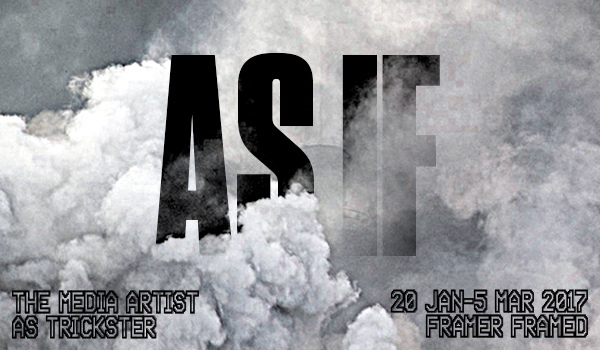
Expositie: As If - The Media Artist as Trickster
Over politieke mediakunst waarin verschillende vormen van misleiding centraal staan, samengesteld door Annet Dekker en David Garcia ism Ian Alan Paul
Agenda
Symposium: The Society of Post-Control
Uitgebreid gesprek over het ontstaan, gevolgen, en activistische reacties op 'the Society of Post-Control'.
Netwerk

Florian Cramer
Lector autonome kunst- en designpraktijken bij de Willem de Kooning Academie
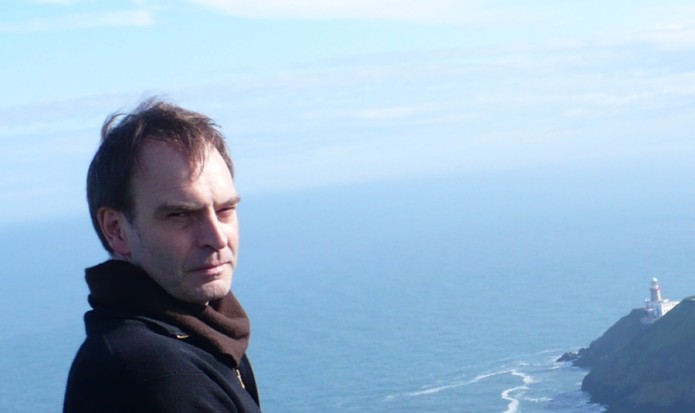
Eric Kluitenberg
Auteur en programmamaker
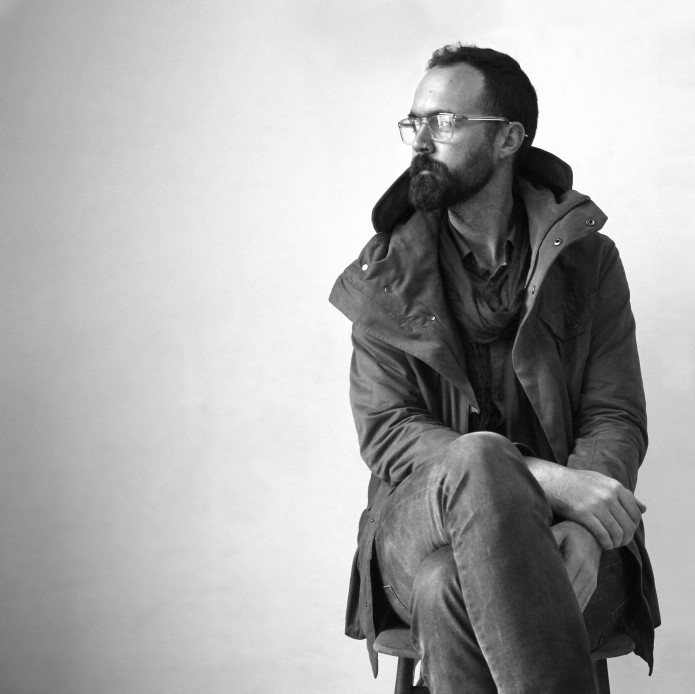
Ian Alan Paul
Kunstenaar, curator

